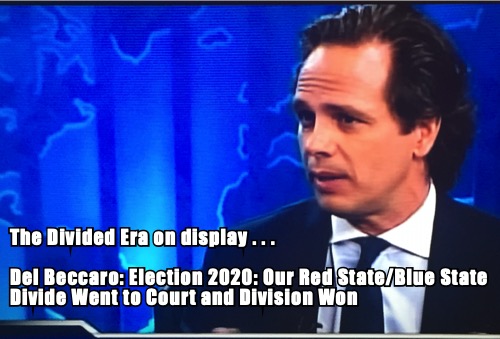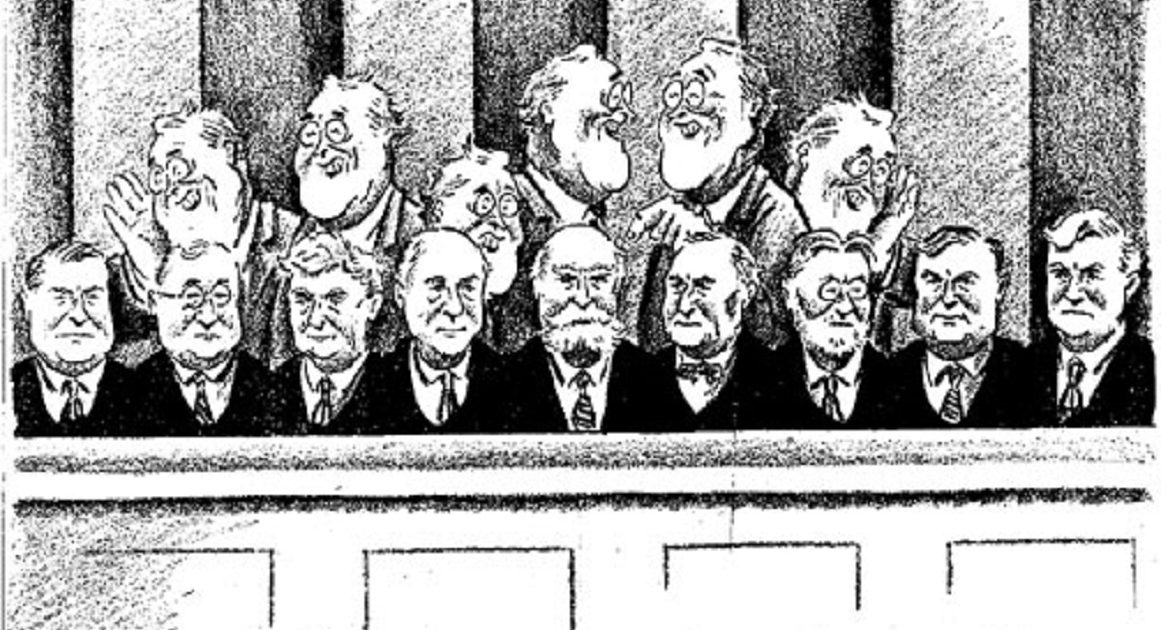Election 2020: Our Red State/Blue State Divide Went to Court and Division Won – by Tom Del Beccaro
The 2020 election was, and continues to be, the most divisive in decades. With so much at stake, including which party gets to direct trillions in government spending, we spent a record $14 billion on the election and aren’t finished.
Indeed, between the Georgia Senate runoffs and election-related court fights, we still are at odds.
One distinct aspect of the divisions in our country is our growing red state/blue state divide.
For decades, Americans have been sorting each other out by moving to states that reflect their political views more than the weather they like. In the process, our country has taken on a distinct number of red states and blue states as reflected in our electoral maps, election after election.
Now, as if to highlight the nature of our divisions in what I call this “Divided Era,” which began in the mid-1990s and deepens with each passing day, our red state/blue state divide went to court. I am writing, of course, of the lawsuit entitled The State of Texas, Plaintiff v. Commonwealth of Pennsylvania, State of Georgia, State of Michigan, and State of Wisconsin.
That lawsuit stood for the simple proposition that because those four states acted unconstitutionally with respect to their election process, according to the State of Texas, Texas voters were effectively disenfranchised. In short, the illegal votes counted in those states canceled the legal votes of Texans.
According to the Supreme Court, Texas had no right to bring the lawsuit. Immediately, state Republican Party Chairman Allen West brought up the prospect of Texas seceding. West went so far as to say: “Perhaps law-abiding states should bond together and form a Union of states that will abide by the constitution.”
We are, of course, a republic. Generally, we vote for representatives, not directly for laws. We also indirectly vote for our president through the Electoral College. That latter process is also the fodder for political divisionbetween the red and blue states.
Given that twice in the past 20 years, we have elected a president who lost the popular vote, by virtue of an Electoral College win, there are many in the blue states who want to dispense with the Electoral College all together and elect presidents by a direct popular vote.
If that occurred, then the voters of the 17 to 19 reliably blue states, which have the bulk of our population, could regularly elect our president. Just as in the 1780s, the generally lower population states, many of them red now, favor the Electoral College because it gives them a voice in presidential elections.
As I have said and written elsewhere, if we dispensed with the Electoral College, it would certainly lead to a movement of disunion by red state citizens. Many would rather break up the United States than live under perpetual Democratic rule that resembles the troubled state of California.
All of which brings us back to Texas’s challenge to the 2020 presidential election. Not to be left alone, Texas was joined in its efforts by Missouri, Alabama, Arkansas, Florida, Indiana, Kansas, Louisiana, Mississippi, Montana, Nebraska, North Dakota, Oklahoma, South Carolina, South Dakota, Tennessee, Utah, and West Virginia—17 states that voted for Trump. They were joined at least theoretically by 106 Republican members of Congress.
Never before in our history have we witnessed such a dynamic in response to an election outcome—except once, of course. Eleven Southern states greeted the election of Abraham Lincoln by seceding.
While we aren’t nearly as divided now as we were in 1860, it is no small development that so many red states now believe our system of government is functioning so poorly that they banded together in the hope of deciding an election in the courts. Just as it is no small development that so many blue states want the end of the Electoral College.
Worse yet, it’s very apparent that the outcome of all of the court fights and the election won’t be unifying. We shall be more divided, not less.
Long ago, the leaders of the large states agreed with the leaders of the small states that a union of states would be more beneficial to all than a divisive set of colonies. So the large states agreed to two senators per state and the Electoral College. They had the foresight to give up short-term power for long-term unity.
The key to that success was for leaders to understand the limits of gathering power unto themselves. Sadly, that virtue is in quite rare supply today.







